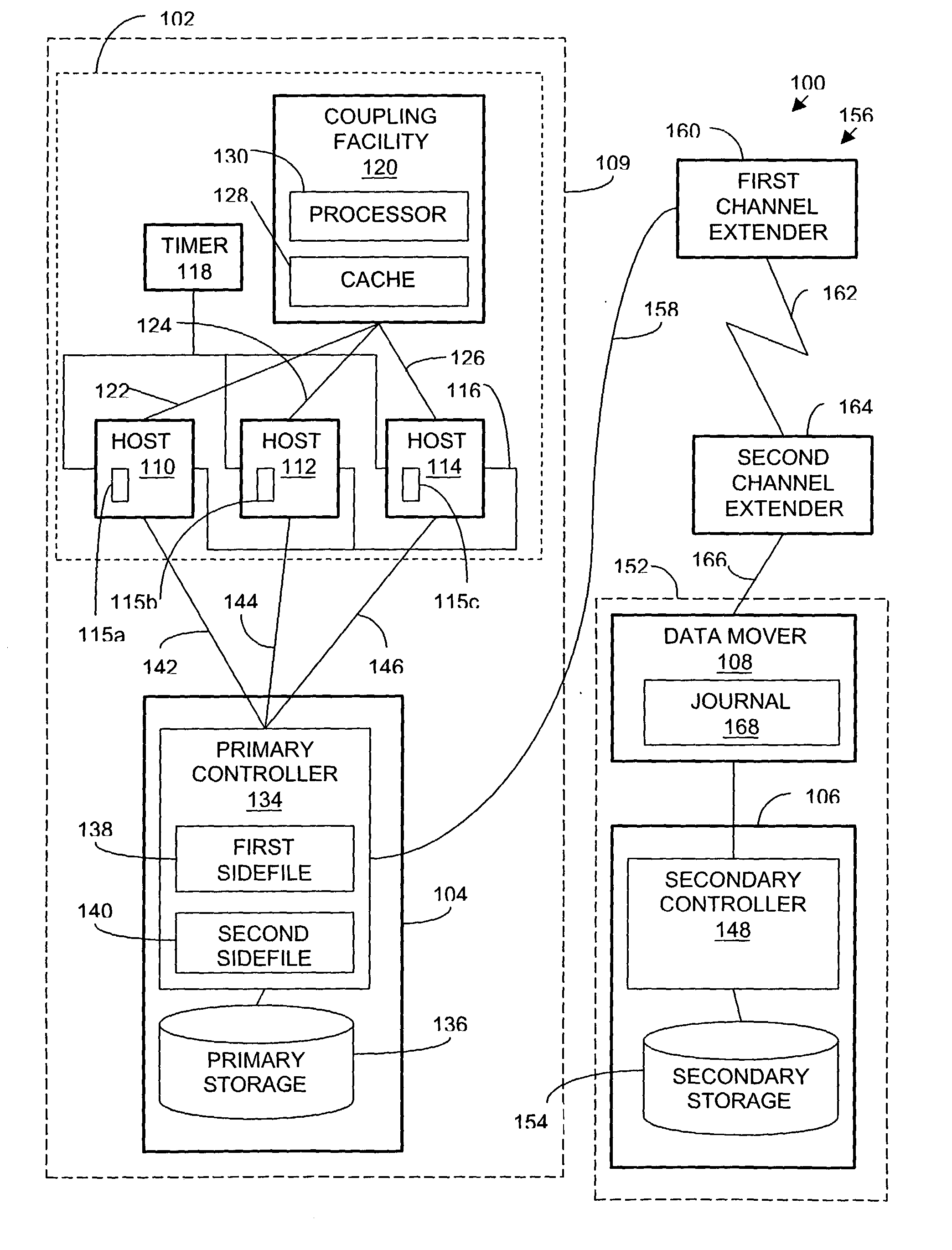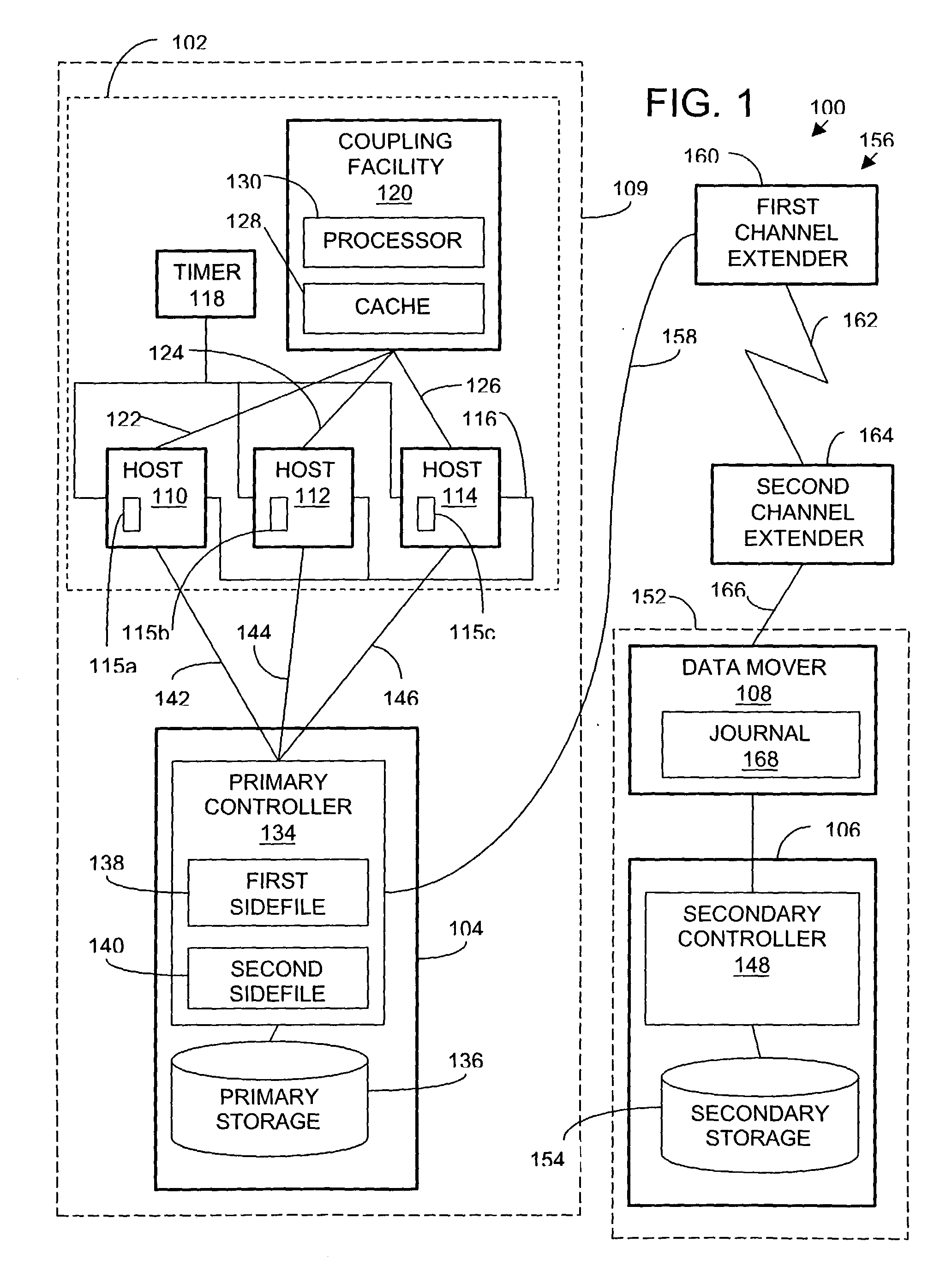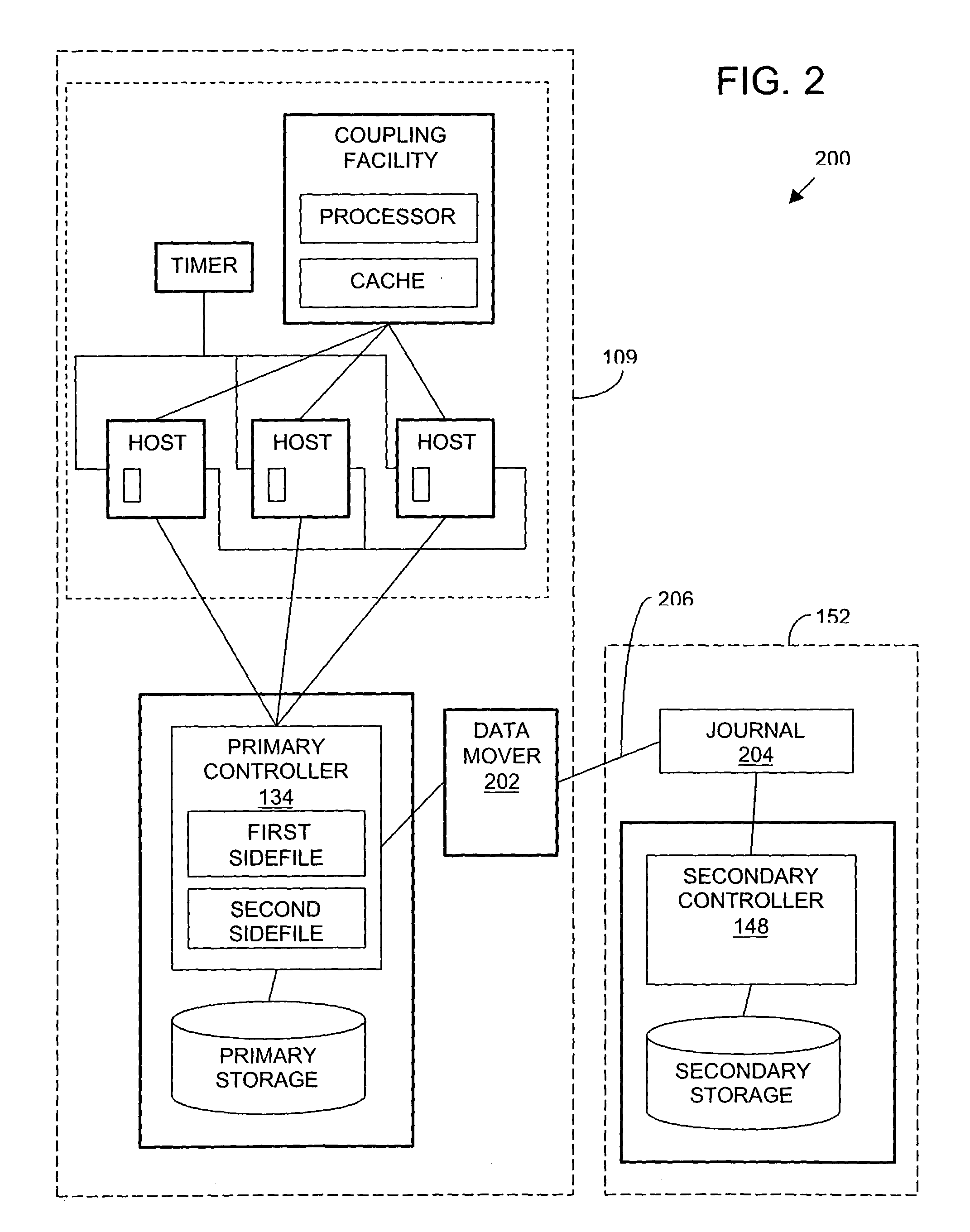Adjusting timestamps to preserve update timing information for cached data objects
a data object and cache technology, applied in data processing applications, memory adressing/allocation/relocation, instruments, etc., can solve the problems of data not being mirrored directly from a cache, data being fraught with problems, and using a host level cache (i.e. accessible by the host, primary storage subsystem) is fraught with problems
- Summary
- Abstract
- Description
- Claims
- Application Information
AI Technical Summary
Benefits of technology
Problems solved by technology
Method used
Image
Examples
second example
[0043] In an alternative system 200 shown in FIG. 2, the data mover 202 does not include a journal. In FIG. 2, the data mover 202 is located at the primary site 109 and a separate journal 204 is located at the secondary site 152. In this alternative embodiment, the data mover 202 is coupled to the journal 204 by a link 206. The data mover 202 is also coupled to the primary controller 134. In one example, link 206 comprises an extended link as described above. In another embodiment, the link 206 is an ESCON or FICON link, or other suitable link. The journal 204 is coupled to the secondary controller 148. As an alternative, the journal 204 is omitted, and the data mover 202 is coupled directly to the secondary controller 148.
third example
[0044] In another alternative system 300 shown in FIG. 3, the data mover 302 is located at a third site 304. In this alternative embodiment, the data mover 302 is coupled to the primary controller 134 by a link 306 such as an ESCON or FICON link or an extended link. The data mover 302 is coupled to the journal 308 by a link 310 such as an ESCON or FICON link, or an extended link. The journal 308 is coupled to the secondary controller 148. Alternatively, the journal 308 may be located at the third site 304, in the data mover 302, or separate from the data mover 302. Alternatively, there is no journal 308, and the data mover 302 is coupled directly to the secondary controller 148.
fourth example
[0045] An alternative example is illustrated by the system 400 in FIG. 4. The system 400 includes a host 402, a cache 404, a primary storage subsystem 406, a secondary storage subsystem 408, and a data mover 410. In contrast to the system 100 in FIG. 1, in the system 400 of FIG. 4 the cache 404 is not part of a coupling facility, there is no timer, and there is only one host 402. Also, in the illustrated example of the system 400, a primary storage controller 412 is coupled to the data mover 410 with an ESCON or FICON link 414. Otherwise, the components, connections, and operation are generally the same in the system 400 as in the system 100. In an alternative embodiment of the system 400, a timer may be coupled to the host 402. Also, in an alternative embodiment, the primary controller 412 may be coupled to the data mover 410 with an extended link, as described above with reference to FIG. 1.
[0046] In the system 400 of FIG. 4, the host 402, the cache 404, and the primary storage su...
PUM
 Login to View More
Login to View More Abstract
Description
Claims
Application Information
 Login to View More
Login to View More - R&D
- Intellectual Property
- Life Sciences
- Materials
- Tech Scout
- Unparalleled Data Quality
- Higher Quality Content
- 60% Fewer Hallucinations
Browse by: Latest US Patents, China's latest patents, Technical Efficacy Thesaurus, Application Domain, Technology Topic, Popular Technical Reports.
© 2025 PatSnap. All rights reserved.Legal|Privacy policy|Modern Slavery Act Transparency Statement|Sitemap|About US| Contact US: help@patsnap.com



